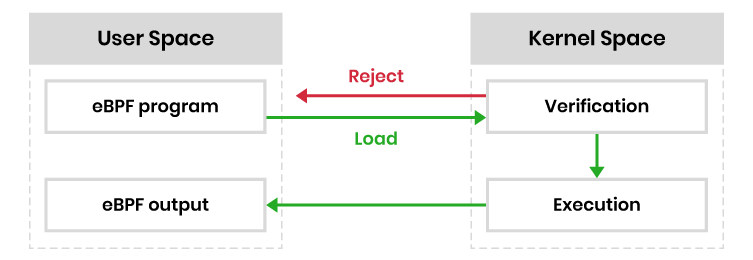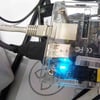Welcome to the whimsical world of eBPF, where the Linux kernel dons its cape and transforms into a superhero of computing! Picture this: your ordinary kernel, now infused with extraordinary powers, thanks to the magic of Extended Berkeley Packet Filter (eBPF). It's like adding a pinch of pixie dust to your system, unleashing a world of possibilities for networking, security, and performance optimization.
In this guide, we'll embark on an adventure through the enchanted forests of eBPF, exploring its mystical powers and uncovering its secrets. From weaving spells of network optimization to warding off cyber threats with a flick of the wand, eBPF is the hero your infrastructure deserves.
So grab your cloak, sharpen your wand, and let's journey into the captivating realm of eBPF, where the kernel becomes a realm of wonder and possibility.
What is eBPF, Anyway?
eBPF, or Extended Berkeley Packet Filter, is like the secret ninja warrior of the Linux kernel. It lets engineers craft programs that venture into the deepest, darkest corners of the operating system—the kernel space—without causing chaos or summoning the blue screen of death. Think of it as giving your code a backstage pass to the ultimate concert, where all the action happens.
Now, why is this a big deal? Well, imagine your favorite rockstar (that's your user application) stuck in the nosebleed seats, unable to see the epic guitar solos and pyrotechnics happening on stage (that's the kernel space). That's what life without eBPF looks like for your applications—missing out on all the cool stuff happening under the hood.
But fear not! With eBPF, your applications can finally snag VIP access to kernel space, allowing them to eavesdrop on network conversations, peek at system events, and even dabble in some security wizardry—all while sipping on a metaphorical cocktail and enjoying the show without causing any backstage meltdowns. Now that's what I call a kernel party worth attending!
eBPF comes to the rescue by creating a secure playground right in the heart of the Linux kernel. It's like building a fortress where your code can roam freely without causing chaos or triggering any kernel alarms. This "sandbox" approach ensures that only the most well-behaved code gets to play in the kernel space, keeping your system safe and sound.
Now, what does this mean for your applications? It's like giving them a backstage pass to the ultimate rock concert, where they can mingle with the band, tweak the soundboard, and even sneak a peek at the setlist—all without causing any mayhem. With this VIP access, eBPF programs can tackle all sorts of cool tasks, from sniffing out malware and squashing bugs to analyzing network traffic with laser-like precision.
So, next time you need to dig deep into kernel operations without breaking a sweat, just remember: eBPF has got your back, keeping your system safe while your code roams free in the ultimate playground of the Linux kernel.
Exploring the Versatility of eBPF: Use Cases Unveiled
Behold the magic of eBPF, where the nerdy meets the hysterical!
Security:
Imagine a world where your system calls wear capes and your networking operations dance the salsa. With eBPF, we transcend the mundane to create security systems so savvy they make hackers rethink their life choices.
In the past, filtering system calls and wrangling network operations felt like herding cats. But with eBPF, it’s like herding cyborg cats with laser eyes—total control, baby!
Networking:
Welcome to the eBPF circus, where packets do acrobatics and routers juggle like pros. Efficiency? Programmability? We got 'em both! Need a new protocol parser? No sweat. Want to change your forwarding logic on the fly? Easy peasy, kernel squeezy.
And our JIT compiler? It’s like having Usain Bolt on your coding team—fast, furious, and ready to leave your competition in the dust.
Tracing and Profiling:
Ever wanted to spy on your applications without feeling like a creepy stalker? Enter eBPF, the ultimate surveillance tool for the discerning sysadmin.
Attach eBPF programs to kernel trace points, and suddenly you’re Sherlock Holmes with a magnifying glass, uncovering the mysteries of runtime behavior. It’s like CSI: Linux Edition, but with fewer dead bodies and more histograms.
Observability and Monitoring:
Forget boring old gauges and static counters. With eBPF, we throw a techno-rave in the kernel and collect custom metrics like party favors.
No more drowning in data lakes or suffocating under the weight of endless samples. eBPF cuts through the noise like a ninja with a chainsaw, giving you deep visibility with minimal system overhead. It’s like having X-ray vision for your code, minus the spandex suit (unless you’re into that sort of thing).
Decoding the Magic: How eBPF Revolutionizes Linux Kernel Access
eBPF programs are the secret sauce for tapping into the depths of the Linux kernel, enabling a plethora of functionalities ranging from debugging to networking and beyond.
Born out of the necessity for better tracing tools in the Linux ecosystem, eBPF took cues from its predecessor, dtrace, which ruled the tracing realm in BSD and Solaris realms. Unlike dtrace, however, Linux lacked a unified view of its running systems, confining itself to specific frameworks.
Building upon the foundations laid by BPF (Berkeley Packet Filter), eBPF emerged as its flamboyant successor. Originally introduced in a limited capacity in 2014 with Linux 3.18, it truly blossomed with Linux 4.4 and above.
The eBPF architecture, depicted in the accompanying diagram, undergoes a rigorous vetting process before it's allowed to frolic within the kernel. Verification entails executing the eBPF program in a virtual machine, ensuring it meets the stringent requirements set forth.
Diving into eBPF: Your Roadmap to Mastery
Ready to embark on your eBPF journey? Fear not, for a plethora of resources await your eager exploration.
Start your adventure at eBPF.io, the holy grail of all things eBPF. This open-source community hub serves as a treasure trove of knowledge, offering insights, tutorials, and a vibrant community to guide you along the way. Need a head start? Check out the plethora of open-source and proprietary eBPF-based applications available on ebpf.io/applications or GitHub.
Looking to set up your eBPF infrastructure? Look no further than ebpf.io/infrastructure, your gateway to essential tools for creating, compiling, and running eBPF programs. From the eBPF Runtime to various compilers, and yes, even an emerging eBPF Runtime for Windows (yes, you read that right!), this portal has got you covered, no matter your platform of choice.
But wait, there's more! Enter the BCC toolkit and library, your trusty sidekick in simplifying the arcane art of writing eBPF applications. With BCC by your side, you'll be wielding eBPF like a seasoned pro in no time.
Ready to dive headfirst into network traffic capture? Then look no further than the Datadog tutorial, where you'll learn to harness the full potential of eBPF in unraveling the mysteries of the digital ether.
So buckle up, intrepid explorer, for the world of eBPF awaits. Adventure, excitement, and endless possibilities lie just around the corner.








Top comments (1)
eBPF is a really powerful approach. Thanks for your time on this article!